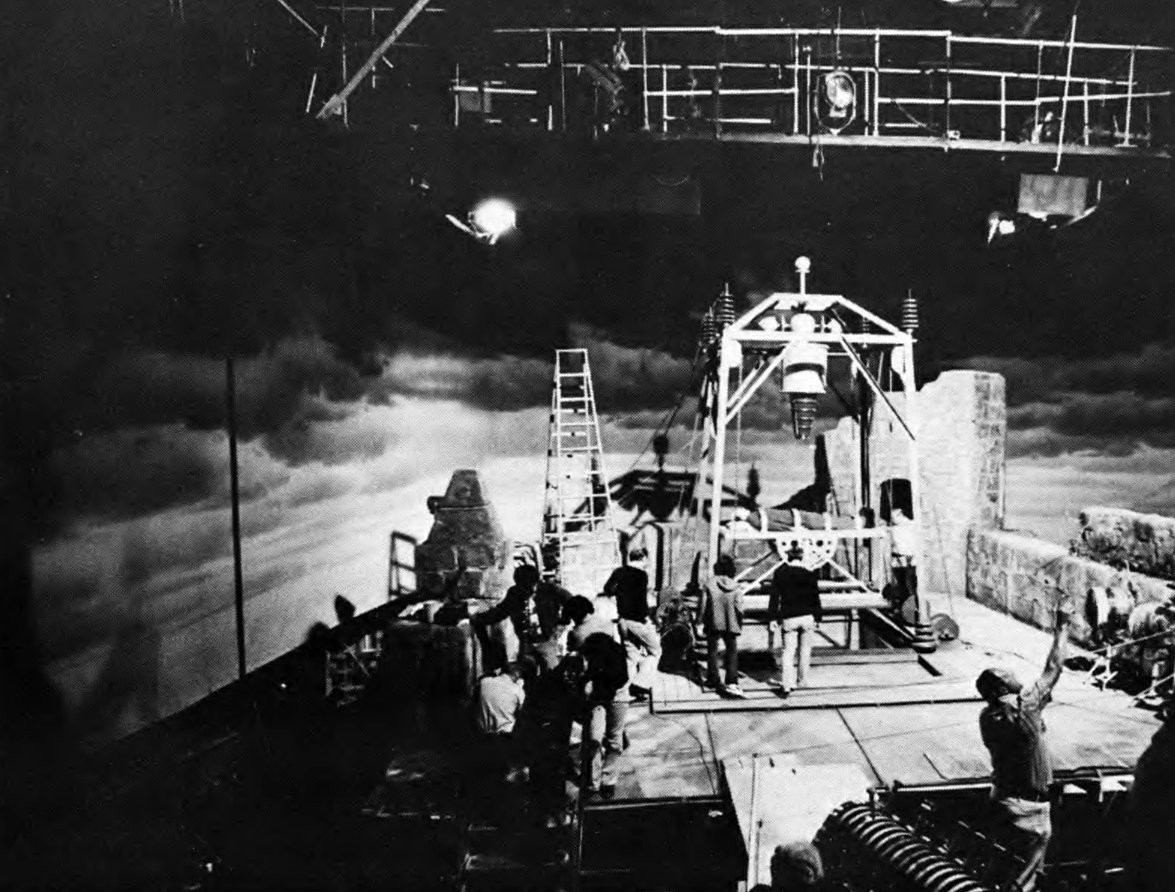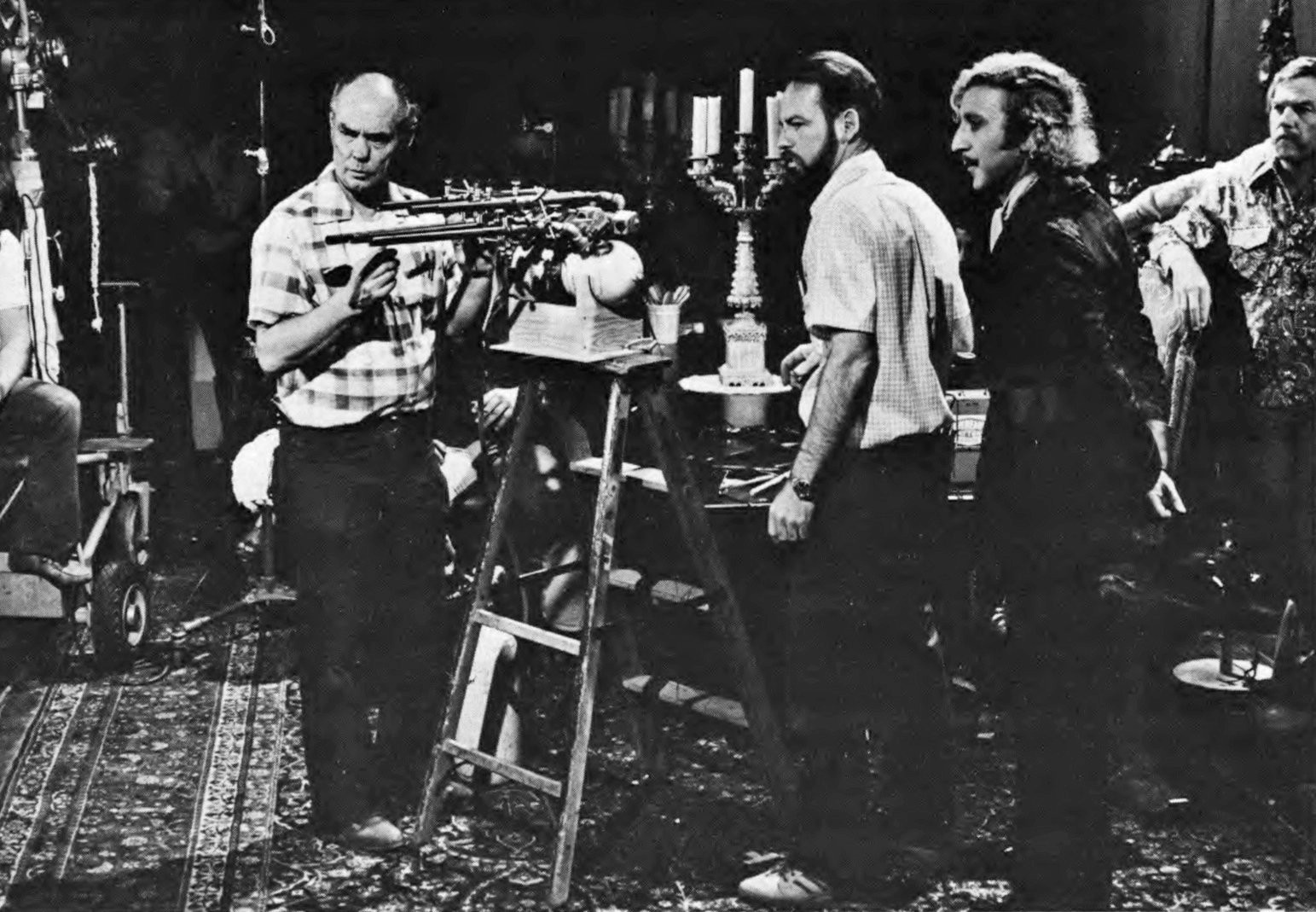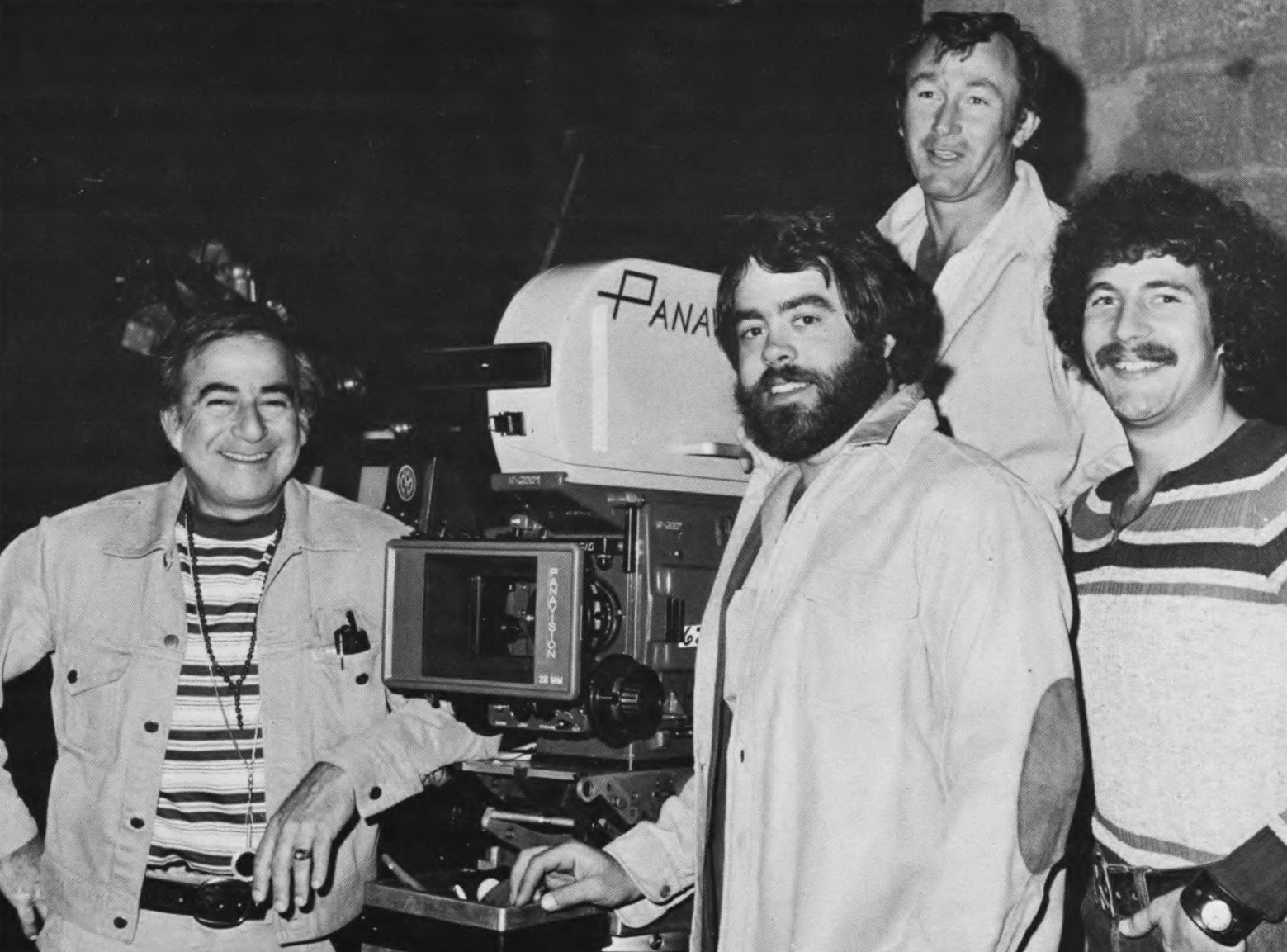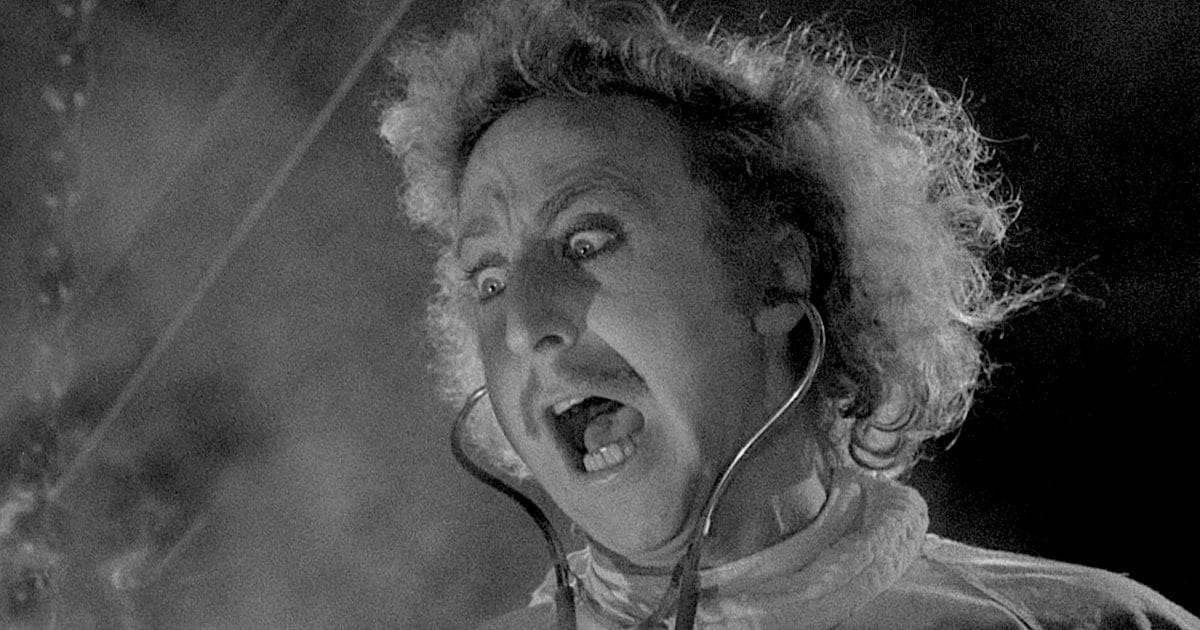For fans of comedy and classic monster movies, Young Frankenstein stands as a timeless masterpiece. Directed by Mel Brooks and released in 1974, this hilarious parody pays homage to the Frankenstein films of the 1930s while carving out its own unique and unforgettable identity. Beyond the brilliant comedic performances and witty script, Young Frankenstein is a visual feast, boasting stunning black and white cinematography and ingenious special effects that contribute significantly to its enduring charm. If you’re looking for where to watch Young Frankenstein, you’re in luck! This beloved film is readily available on various streaming services and for digital purchase, allowing audiences new and old to experience its cinematic brilliance.
But what makes Young Frankenstein so visually captivating? The answer lies in the meticulous craftsmanship of its production team, who went to extraordinary lengths to recreate the atmosphere of classic horror films while injecting their own comedic flair. Let’s delve into the fascinating behind-the-scenes details of how Young Frankenstein‘s iconic visuals were brought to life, drawing insights from an original article detailing the film’s cinematography and special effects.
The Grandeur of Frankenstein’s Castle: Production Design by Dale Hennesy
The imposing and atmospheric castle of Baron Frankenstein is integral to the film’s visual identity. Production designer Dale Hennesy, a true visionary, constructed an elaborate castle set that was nothing short of breathtaking. According to the original article, Hennesy’s creation was “an almost unbelievable complex” featuring courtyards, a grand reception hall, spiraling staircases, secret passages, and intricately detailed bedrooms and laboratories.
Hennesy’s dedication and passion for the project were evident in every stone and shadow of the set. The article highlights the sheer scale of his achievement: “$400,000 later there were the most magnificent 35′-high sets, cobbled streets, and assembled rooms of a type that would make any cinematographer’s mouth water.” These weren’t mere sets; they were immersive environments that transported both the actors and the audience into the world of Young Frankenstein. The varying shades of grey stone used in the set design provided cinematographer Gerald Hirschfeld with a perfect canvas to manipulate light and shadow, enhancing the film’s moody and dramatic atmosphere. Hennesy’s contribution was, as the original article rightly states, “major toward the look of the picture.”
A key element of the castle set was the enormous reception hall. The article describes it as “huge elaborate,” emphasizing the deliberate choice to dwarf the actors with “35′-high walls, 15′ doors, and the 6’x10′ fireplace.” This sense of scale not only added to the gothic atmosphere but also heightened the comedic effect by contrasting the human characters with their exaggerated surroundings.
 Young Frankenstein Castle Rooftop Set
Young Frankenstein Castle Rooftop Set
The castle rooftop set, complete with the iconic operating platform, is another testament to Hennesy’s genius. This set piece, featuring a platform that dramatically rises through the roof to a massive electrode, was crucial for the film’s climax. The image above showcases the rooftop set, revealing the operating platform and even a dimmer bank in the foreground – a piece of equipment rarely seen in modern color filmmaking, adding to the film’s vintage aesthetic. It’s within these meticulously crafted sets that the story unfolds, and they are a significant reason why Young Frankenstein remains so visually compelling even today. When you decide where to watch Young Frankenstein, pay close attention to the incredible detail and scale of these sets – they are truly a work of art.
Bringing the Lab to Life: Special Effects Magic
Beyond the stunning sets, Young Frankenstein is celebrated for its clever and often humorous special effects. The special effects team, led by Henry Millar, Jr., his father Hal Millar, and Jack Monroe, played a crucial role in creating the film’s eerie and comedic atmosphere. Their contributions ranged from atmospheric fog to elaborate electrical wizardry, all executed with remarkable skill and ingenuity.
One of the most pervasive effects in the film is the low-hanging fog that blankets the castle grounds. The article reveals the impressive quantity of materials used to create this effect: “They gave life to the night with their low-hanging fog made with the help of a ton-and-a-half of dry ice.” This fog wasn’t just for atmosphere; it was integral to setting the “eerie opening mood” as the camera navigates the castle’s archways and courtyards amidst a storm.
The absence of electricity in the castle, except for the laboratory, dictated the lighting design and special effects. The article notes, “Since the castle is devoid of electricity, except for the laboratory, all the rooms are lighted by oversized fireplaces, huge candelabras, and wall torches.” These light sources weren’t just practical; they were also enhanced with special effects to create realistic flickering firelight. The filmmakers ingeniously used “silk strips of fabric fluttering in front of two or more lamps placed out of camera range” to simulate firelight bouncing off walls and actors. This low-tech yet highly effective method contributed to the film’s warm and inviting, yet still slightly spooky, interior scenes.
The special effects team also devised practical solutions for various on-screen gags. One such example is the “dart gun” used by Dr. Frankenstein. The article describes it as “a blow-pipe arrangement fired electromagnetically” capable of hitting bullseyes with every shot. This seemingly simple prop required clever engineering to function reliably on set.
 Young Frankenstein Special Effect Dart Gun
Young Frankenstein Special Effect Dart Gun
The image above showcases the “special effect ‘dart gun’,” highlighting the level of detail put into even seemingly minor props. The compressed air mechanism allowed for precise and repeatable shots, essential for comedic timing. These seemingly small details, when combined, contribute to the overall polished and believable world of Young Frankenstein. When you watch the movie, appreciate the seamless integration of these practical effects – they are a testament to the resourcefulness and creativity of the special effects team.
The Electrical Wizardry of Ken Strickfaden
Perhaps the most visually striking special effects in Young Frankenstein are the electrical effects in the laboratory scenes. These effects weren’t just visually impressive; they had a direct connection to the history of the Frankenstein films. The production team remarkably discovered that some of the original electrical laboratory equipment from the 1931 Frankenstein film was still in existence, stored in the garage of its designer, Ken Strickfaden.
Ken Strickfaden himself was brought on board to work on Young Frankenstein, adding an unparalleled level of authenticity and historical connection to the film. The article notes, “This man, Mr. Ken Strickfaden, was on hand during all the laboratory filming to add his touch to the already fantastic array of bubbling vats and retorts and plastic tubes pumping blood solutions.” Strickfaden not only provided original equipment but also built new devices specifically for Young Frankenstein, ensuring that the laboratory scenes were visually spectacular and scientifically plausible within the film’s comedic context.
The image above captures Ken Strickfaden amidst his electrical creations, highlighting the sheer scale and complexity of the equipment. The article details some of the specific devices Strickfaden created or utilized, including “Jacob’s Ladders,” “Melodic Melinda,” and “radial lightning devices.” Jacob’s Ladders, with their climbing sparks, and radial lightning devices, shooting arcs in giant circles, created dramatic and visually arresting moments. “Melodic Melinda,” a humorously named gadget, produced arcs that jumped in rhythmic patterns, adding a touch of whimsy to the electrical displays.
The climax of the electrical effects occurs when Dr. Frankenstein raises his creation to life during a thunderstorm. The article describes the scene on the castle rooftop set: “Dr. Frankenstein was hoisted by his assistants, Inga and Igor, by chains through the laboratory roof into the face of a tremendous lightning and thunderstorm.” The electrical discharge effect was achieved with real 500,000-volt arcs, jumping to a dummy monster, creating a truly spectacular and slightly dangerous effect. This dedication to practical electrical effects, overseen by the legendary Ken Strickfaden, is a significant factor in the enduring visual impact of Young Frankenstein. When considering where to watch Young Frankenstein, remember that you’re about to witness some truly iconic and historically significant electrical special effects.
Cinematic Mastery: Lighting and Filming Techniques
Beyond sets and special effects, the cinematography of Young Frankenstein, helmed by Gerald Hirschfeld, is crucial to its visual success. The film’s black and white aesthetic, chosen to directly evoke the classic Frankenstein films, is executed with remarkable nuance and artistry. Hirschfeld faced the challenge of creating a “low-key melodramatic visual look” appropriate for a horror parody while ensuring that the comedic performances were always clearly visible.
The article highlights this delicate balance: “my main problem was to maintain a low-key melodramatic visual look, but to be certain that all the comedic nuances of expression would not be lost in spooky lighting.” Hirschfeld employed various techniques to achieve this, including the subtle use of “inky” lamps to provide just enough fill light to illuminate actors’ eyes without destroying the overall mood. He also creatively utilized the firelight and lightning effects to enhance visibility during key comedic moments.
One interesting technique mentioned is the use of “process filming” to create the train sequences. To transition Dr. Frankenstein from America to Transylvania, the filmmakers used projected backgrounds outside the train windows. For the Transylvanian sequences, they created their own eerie process plate, filming stark, leafless trees and fog at a slow frame rate to simulate speed when projected. This resourceful approach to creating a convincing sense of motion on a sound stage showcases the ingenuity of the filmmaking team.
 Young Frankenstein Camera Crew
Young Frankenstein Camera Crew
The image above shows the camera crew on set, highlighting the collaborative and sometimes humorous atmosphere on the set. The caption mentions the camera operator being cautioned not to laugh and shake the camera, a testament to the film’s comedic nature even during production.
 Gene Wilder as Dr. Frankenstein Lighting
Gene Wilder as Dr. Frankenstein Lighting
This final image of Gene Wilder as Dr. Frankenstein perfectly encapsulates the film’s visual style. The lighting is moody and dramatic, yet Wilder’s comedic expression is clearly visible. This image exemplifies Hirschfeld’s success in balancing the demands of comedy and gothic atmosphere. When you watch Young Frankenstein, appreciate the masterful cinematography that seamlessly blends humor and horror, creating a visually rich and unforgettable cinematic experience.
Conclusion: A Timeless Visual Comedy
Young Frankenstein is more than just a funny movie; it’s a cinematic achievement that expertly blends comedy with the visual language of classic horror. The stunning sets, ingenious special effects, groundbreaking electrical wizardry, and masterful cinematography all contribute to its enduring appeal. From the towering castle sets to the crackling laboratory equipment, every visual element of Young Frankenstein is crafted with care and creativity, making it a film that rewards repeated viewings.
If you’ve never seen Young Frankenstein or are eager to revisit this comedic masterpiece, now is the perfect time. You can easily find where to watch Young Frankenstein on various streaming platforms and digital rental services. Immerse yourself in its black and white world, marvel at the practical effects, and appreciate the dedication and artistry that went into creating this timeless visual comedy. Young Frankenstein is not just a film to watch; it’s a film to experience and savor for its visual brilliance and comedic genius.
